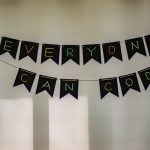Today in class we learnt how to Minecraft!
A group from Colquitz Middle School and Spectrum High School visited us to teach us how Minecraft can be utilized for educational purposes in Elementary, Middle, and High School classrooms. Then, we held a mini “EdCamp” in our class.
We covered the gaming and learning design educational competencies.
In class, we used the Education Edition of Minecraft and went through an introductory tutorial of how to operate within the game. To be honest, it was pretty disorienting at first, and Madi and I had to minimize the screen cause it was all just a bit too much on the big school desktops. It took a little while to get used to using the keys and mouse simultaneously to walk around the virtual world, but we eventually got the hang of it.
We went over how as a teacher, your avatar can have different privileges, such as being able to teleport or to “fly” so as to view and assess your students’ progress. In terms of classroom management, teachers can send students gifts, and have control over the settings and therefore can disable a student’s ability to move, to respawn, to build, to fly, to engage in combat with one another, to send messages, etc. The teacher can also freeze one individual student or even the whole class in order to get their attention.
After we got our bearings, we discussed some of the many educational values of Minecraft EDU:
-students develop their teamwork skills through collaborating together
-mathematics through creating and recognizing patterns and x y coordinates
-science, physics, and architecture through building
-social studies content through creating civilizations
-art through creating pixel art and expressing creativity
-spelling
One of the really significant things about implementing the use of Minecraft EDU in your classroom is that it does not have to be used for the entire class. Minecraft EDU can be offered as an alternative to creating a physical diorama, or in a multitude of different ways. Minecraft EDU can be a really useful tool for implementing inquiry in your classroom, as it can be offered as an option for a project instead of limiting students to writing an essay or creating a posterboard to demonstrate their knowledge and learning.
Next in class, we discussed what an EdCamp is, which is essentially a camp that is held for educators to come together to discuss different relevant topics. As a group, we each came up with topics relating to education that interested us and wrote them on sticky notes, and then we all voted for the top 5 topics we wanted to talk about. We physically separated ourselves throughout the building and self-directed ourselves to join which group we found interesting, with the freedom to move if we wanted to. In these small groups, we had a brief but thought-provoking conversation about inclusion education, while other groups discussed topics such as mental health in classrooms and integrating Indigenous knowledge and practices into the curriculum. At a real EdCamp, there would be a very diverse representation of people who are involved in education, from prospective teachers to educational assistants, to administrative staff, etc. and therefore a very diverse representation of experience and opinions.
Overall, a pretty tightly packed and thorough class!
-Jess






Comments by jessicah